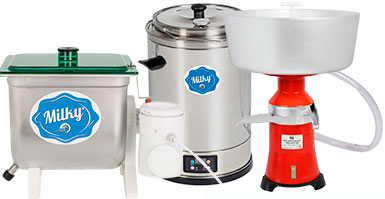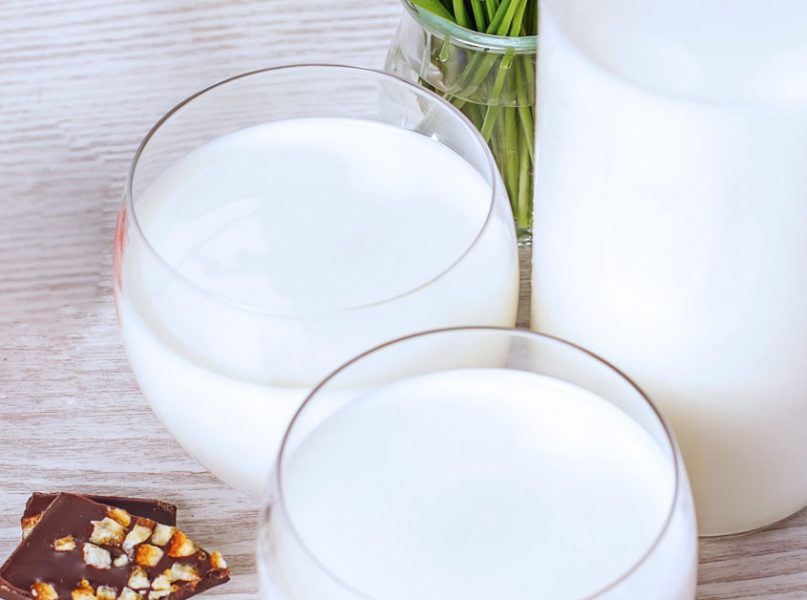If you buy milk from the supermarket, you’ve probably noticed that it is all pasteurized. In some countries, it’s against the law to sell raw, unpasteurized milk. But if you get it from farmers or your own animals, it will always be raw. Well, until you pasteurize it.
What is pasteurized milk?
Pasteurization is the process that kills the majority of the harmful bacteria. The product that gets pasteurized is heated to a certain temperature and then cooled down. We used the term “product” because not only milk can undergo this treatment. What else can be pasteurized? Just about anything. When browsing at the supermarket, you’ll find that juices and other packaged foods are pasteurized too.
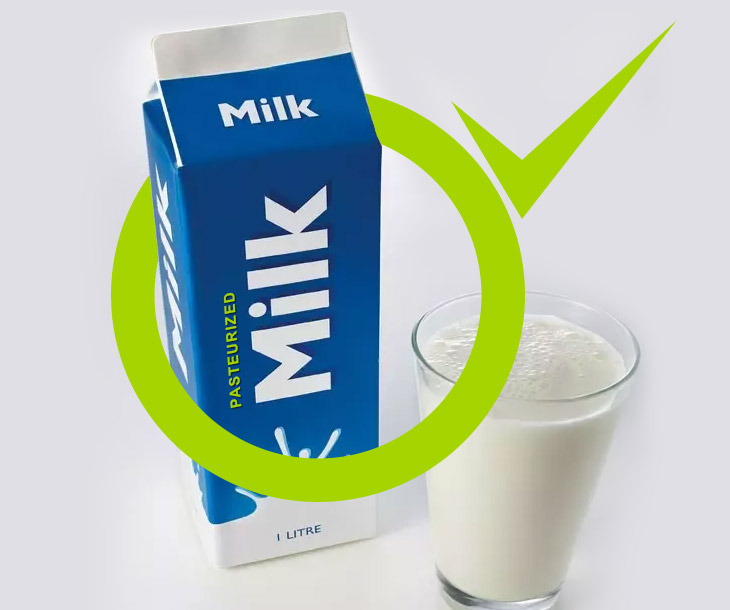
How can you tell if milk is pasteurized? It’s very simple: Read the packaging. It will be written on the label that the product is pasteurized. But if you’re buying milk from farmers, it is most likely raw.
Some people think that ultra-pasteurized milk is harmful. However, that’s a misconception. Find out why it is not true and why people might think ultra-pasteurization is bad from our article.
Why is milk pasteurized?
Just think for a minute: We’ve been consuming dairy products for centuries and only started pasteurizing different types of food in the 18th century. At that time, it was done to preserve products. The milk pasteurization process became mandatory in the U.S. at the beginning of the 20th century.
The reason is simple: Milk is a great medium for bacteria. But why is milk pasteurized and not sterilized? Because sterilization kills all the germs, which would make the milk taste much worse. Besides, the human body can handle those bits of leftover bacteria after pasteurization.
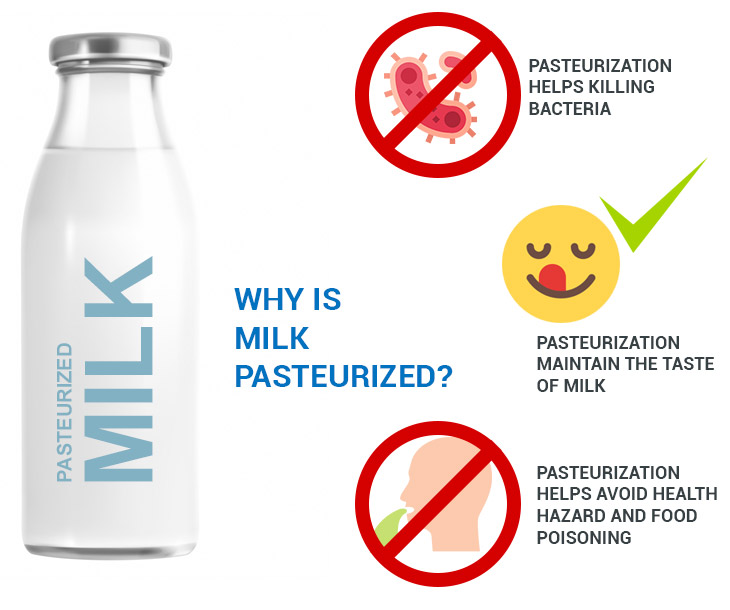
But after consuming raw dairy for all these years, why did we decide that it’s dangerous a century ago? Is it safe to drink raw cow’s milk after all? The answer to the first question is simple: We only learned that bacteria exist in the middle of the 17th century. Scientists eventually discovered that some of these small microorganisms are responsible for human diseases. Therefore, harmful bacteria must be eliminated.

Those of you who are used to farm products must be wondering how you’re still alive and reading this article if you’ve been drinking raw milk all your life. You probably just have a great immune system.
As for the need to pasteurize milk, it isn’t mandatory. But is raw milk safe to drink? Well, it depends on several factors. If you’re gathering milk from your own cow or goat that is completely healthy and the product doesn’t touch anything that can infect it with harmful bacteria, then you most likely have nothing to worry about. Just make sure you’re milking the cattle in a clean environment and storing raw milk in the fridge for no longer than two days.
Here is the opinion of Brian Johnston, the fourth-generation dairy farmer from Tennessee: “I want raw milk. That is one big reason I milk cows. It is easier for the body to digest and we need healthy fats to lubricate our joints.
In the days before we had all the cleansing products available and the knowledge of how to keep things clean, I understand the reason for pasteurization. The downside is that the body cannot digest the milk as well.
The ultra-pasteurized milk cooks the milk until all the proteins are denatured and are not good for you at all. I go to extra lengths to make sure my milk is of the highest standards of cleanliness — only because I drink and use the milk myself. If I have to medicate a cow, I will not sell the milk until the withdrawal time has passed or I have had the milk tested to make sure there is no drug residue in the milk. One cannot make cheese with milk that contains antibiotics.” Here is the full interview with Brian.
But if you’re buying it from a farmer you don’t know well, you should pasteurize it because you don’t know how it was gathered and stored before you purchased it. Keep yourself safe from any harmful bacteria that could get into your milk — especially considering that the pasteurization process is rather simple.
Did you know? With a milk pasteurizer, you can not only make your milk safe but also make your own homemade cheese! We told how to do that in our article 🙂
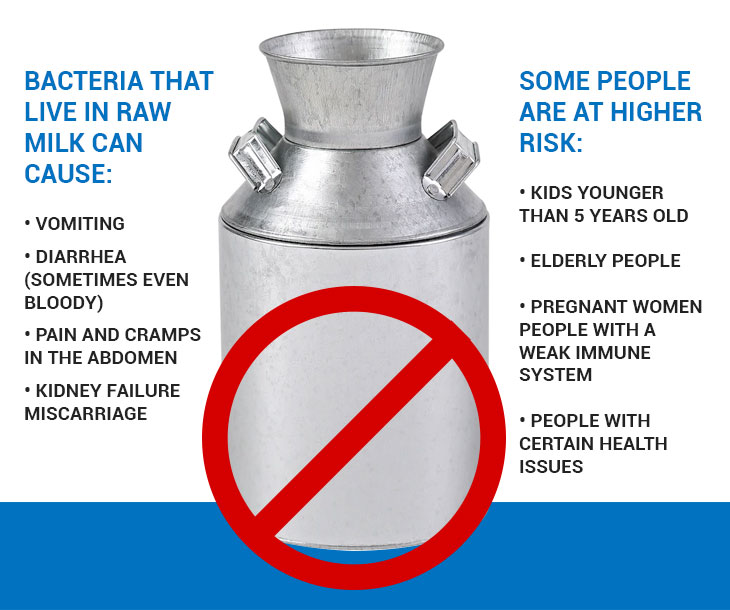
Bacteria that live in raw milk can cause:
- Vomiting
- Diarrhea (sometimes even bloody)
- Pain and cramps in the abdomen
- Kidney failure
- Miscarriage
Also, some people are at higher risk:
- Kids younger than 5 years old
- Elderly people
- Pregnant women
- People with a weak immune system
- People with certain health issues
Some people believe that pasteurization kills beneficial bacteria and vitamins, but frankly, we choose to avoid some of the benefits — if we even lose any — to protect ourselves from the possibility of getting sick. Also, some think that raw milk can be consumed by lactose-intolerant people because the pasteurization process increases the amount of lactose in the product. That’s a misconception. Lactose-intolerant people are just as intolerant to raw milk as they are to pasteurized dairy.
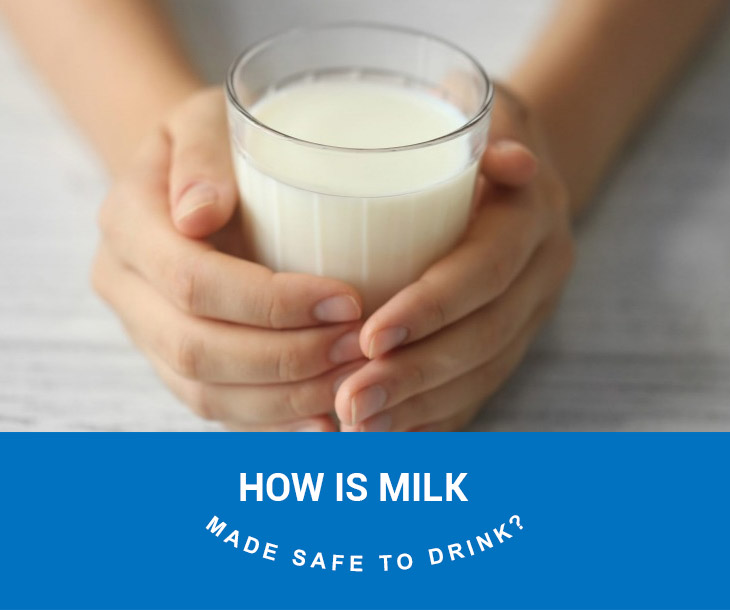
How is milk made safe to drink?
A pasteurization temperature chart indicates that you have to keep milk at 145°F for no less than 30 minutes for batch pasteurization. If you’d prefer a quicker process, you can heat milk to 161°F and keep it at this temperature for 15 seconds. Heating it to 191°F for one second also works.
How can you pasteurize raw milk at home? Obviously, you will need a sterilized cooking thermometer to measure the temperature. If you have one, you can follow these steps:
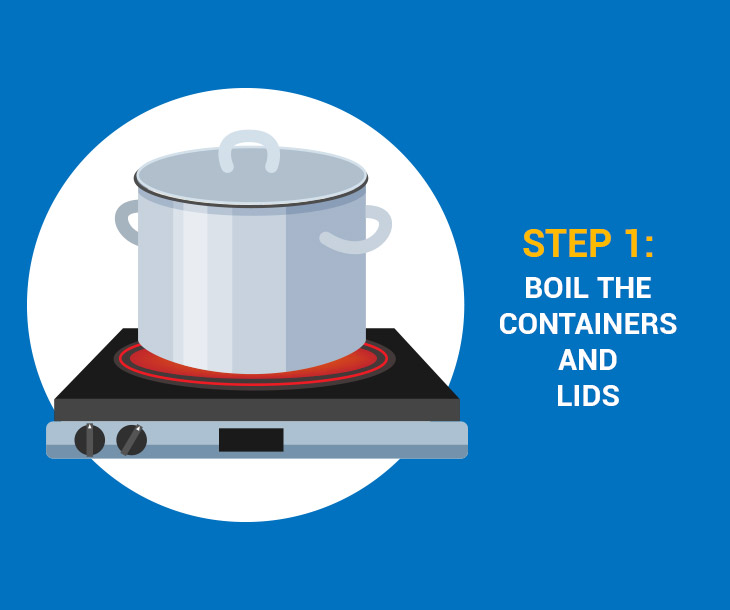
- Boil the containers and lids you’re going to use for 2 minutes.

2. Wash your hands, of course.
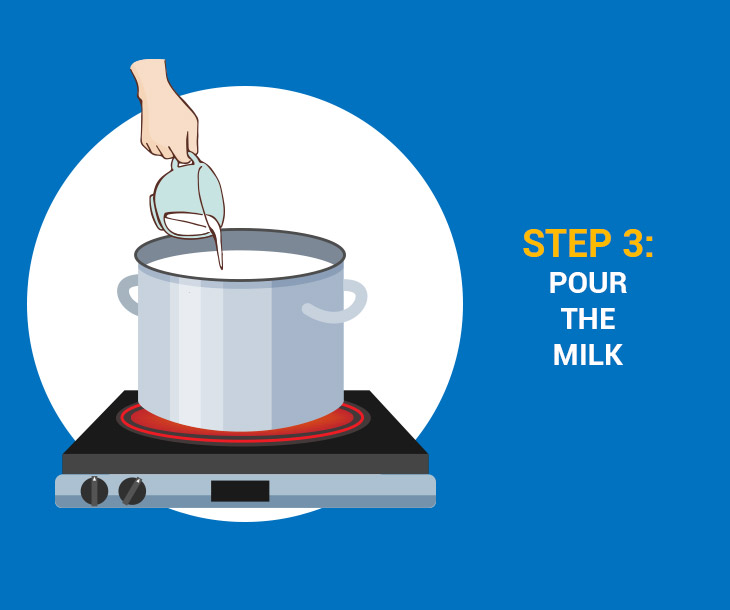
3. Pour the milk in a thick-bottomed pot. The thickness is crucial because milk will otherwise burn on the bottom.

4. Heat it to the required temperature.
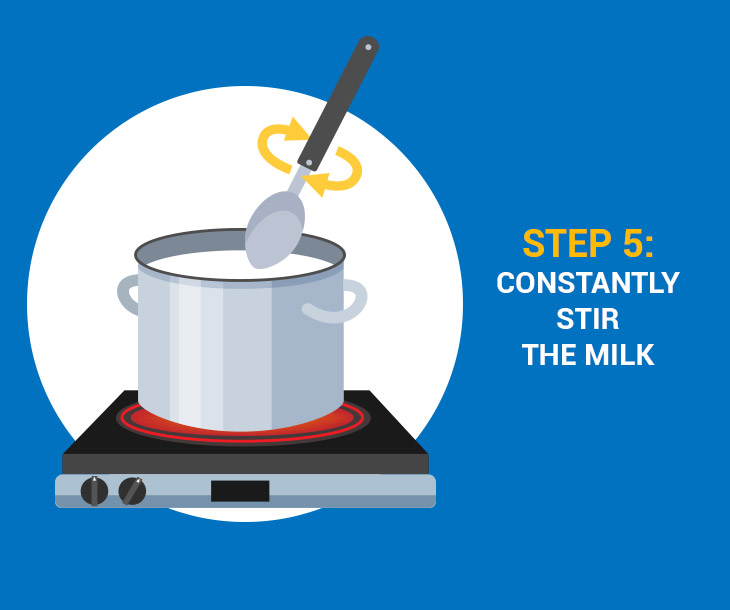
5. Constantly stir the milk with a big spoon or spatula so that it doesn’t stick to the bottom.
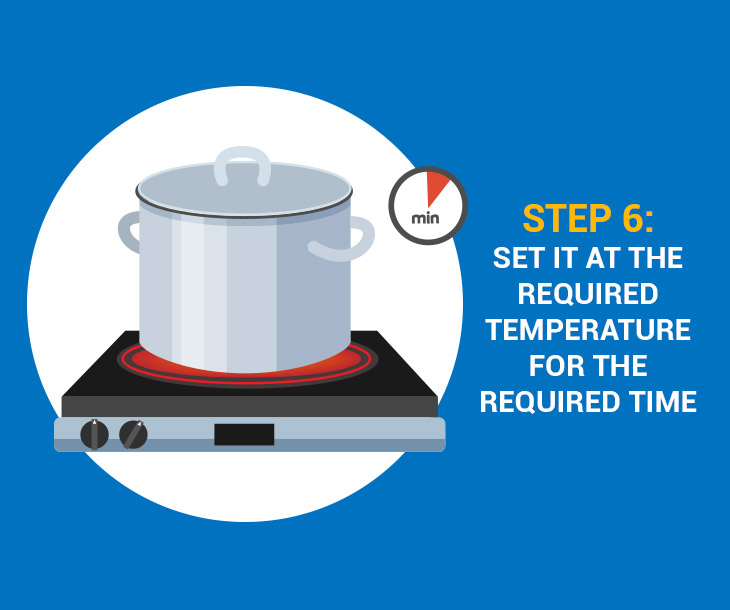
6. Keep it at the required temperature for the required time.
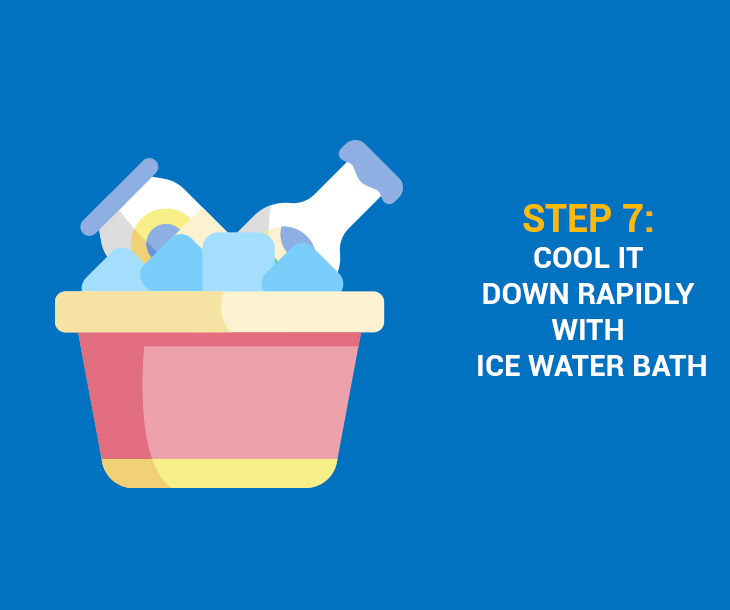
7. Cool it down rapidly by pouring it into a jar and placing it in an ice water bath.
That’s it! Now you know how to pasteurize cow’s milk at home. You can pasteurized goat’s milk by following the same steps.
With that said, it is also important to know how to store pasteurized milk. Pasteurization kills most of the harmful bacteria (90-99%), but it is still not perfectly safe. Keep it in a properly closed sterile container and store it in the fridge to prevent germs from growing.
Are there other pasteurization processes?
It’s very boring to stand next to the stove and stir milk. If you’re not a fan of that process, you can make a DIY pasteurizer, which is a simple double boiler. All you need to do is heat water in a pot and place a bowl with milk over it.
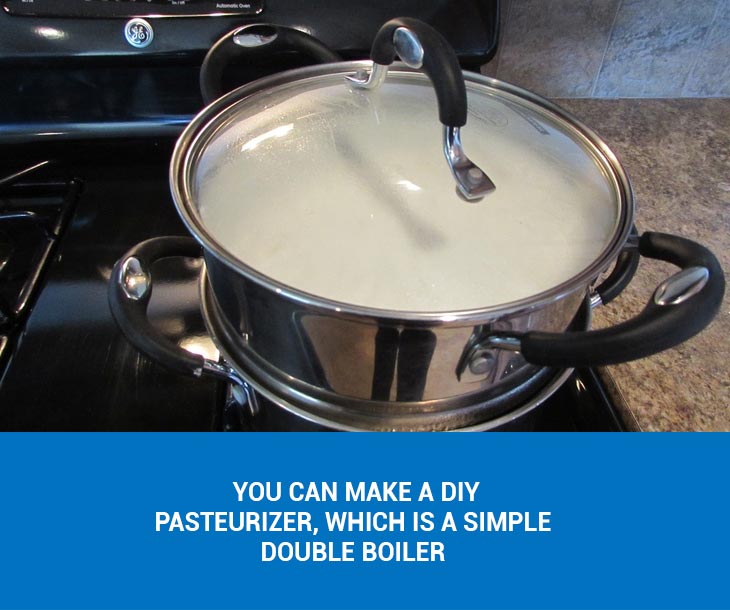
Then go through all the heating and cooling steps described above, and you’re good to go. This pasteurization method doesn’t require you to watch the milk the whole time. However, you will have to be present because you need to control the temperature for a while.
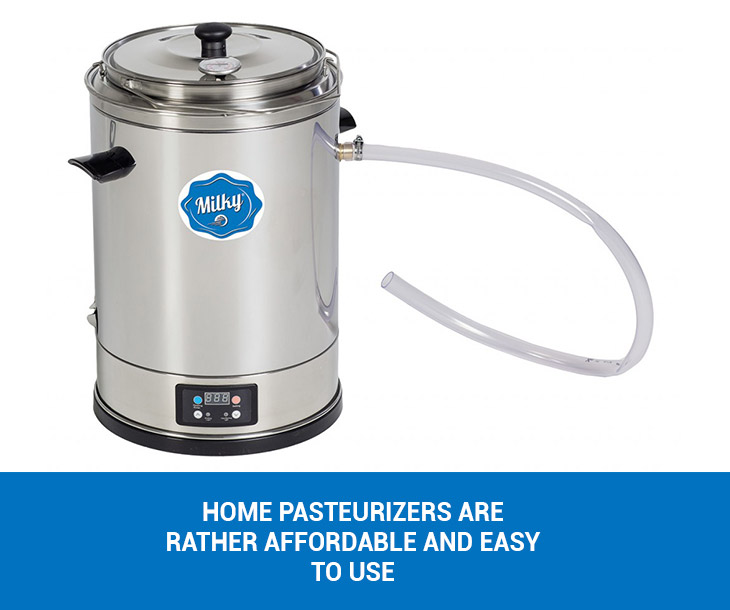
You can also get a pasteurizer to forget about the pasteurization temperature and allow the machine to do the work for you. Home pasteurizers are rather affordable and easy to use. Such a device is very necessary if you buy or gather raw milk all the time.
Explore our range of milk pasteurizers suited for home use as well as for utilization on small to medium dairy farms. If you need any guidance, don’t hesitate to drop us a line!
https://milkyday.com/products/milk-pasteurizers
How can you pasteurize milk commercially?
If you sell milk, you should definitely invest in a pasteurizing machine. It will save you a lot of time and effort. Advanced machines will even take care of the ice bath for you.
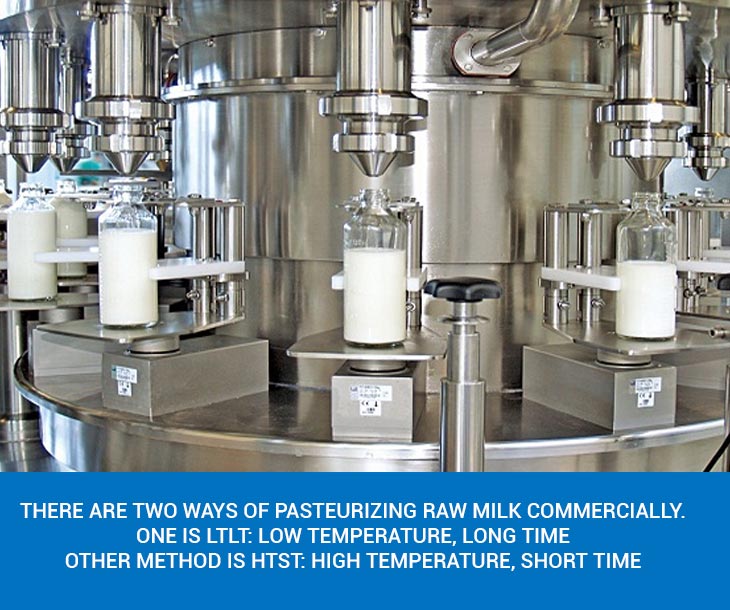
There are two ways of pasteurizing raw milk commercially. The first method is LTLT: low temperature, long time. Such machines are very cheap and simple. They heat milk to 145.4°F and keep it at this temperature for 30 minutes. This method alters the milk protein’s structure and taste. After LTLT, pasteurized milk can be stored in the fridge for 2-3 weeks.
Did you know? You can make yogurt in a milk pasteurizer! Find out how from our quick guide!
The second method is HTST: high temperature, short time. This approach is faster and doesn’t affect the taste as much. Such machines heat milk to 165°F and keep it at this temperature for 15 seconds. The HTST pasteurization will keep milk fresh for up to 30 days if stored in the fridge.
Conclusion: Should you pasteurize raw milk?
There is no doubt that raw milk is healthier for human body than the pasteurized one. But you should pasteurize milk if you are not sure that it is safe to consume. So unless you have your own healthy cattle and manage to keep the milking process clean, take the time to pasteurize your dairy.
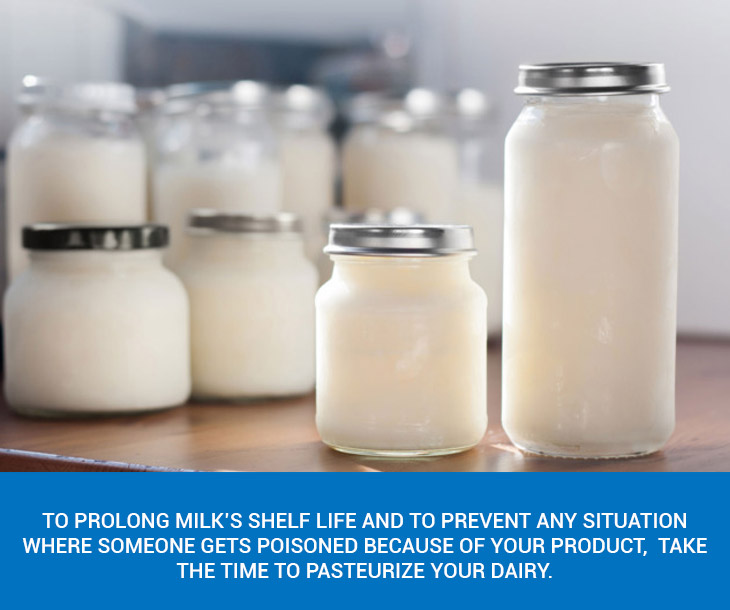
And if you sell milk, it is absolutely crucial to pasteurize it. First of all, you’ll prolong its shelf life, which is vital since you don’t know how long it will take your customer to get their milk to the fridge. Also, you will prevent any situation where someone gets poisoned because of your product. Remove that possibility simply because you can.

